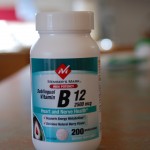My wife subscribes to a healthy cooking magazine and I sometimes read parts. Last week I was puzzled by their piece regarding appropriate dietary sodium intake. There were three column, one for younger adult women, one for "older" women (starting at 51) and one for all adult men.
The levels were 2,300 mg per day for young women and all men and 1,500 mg a day for men. Yet sodium recommendations (in various publications) for older adults of both genders as well as African Americans of any adult age, and those of us with high blood pressure, diabetes or kidney disease (a total of perhaps 70% of our total population) range from 1,300 to 1,500 mg per day . The American Heart Association now recommends all of us limit our sodium intake to 1,500 mg/day. http://circ.ahajournals.org/cgi/content/full/123/10/1138.
I decided to write an email to the magazine and mentioned that they were behind the power curve. I got a prompt answer from their senior dietitian; in their June edition they'll be listing a lower figure for older men. I thought. 'It's a start, at least."
Then I received the June 2011 edition of the Harvard Heart Letter. One question that arises when we're told to cut back on salt, is will we stinting on iodine? The title of the lead article gave a direct answer: "Cut salt--it won't affect your iodine intake." The subtitle continued in the same theme: "Iodized salt provides only a small fraction of daily iodine intake."
Those of us over the age of 19 should get 150 micrograms of iodine per day (The senior vitamin/mineral supplement we take contains 150 micrograms/tablet). The recommendations are higher for women who are pregnant or breast-feeding (220 and 290 micrograms respectively).
We also get iodine from dairy products including cheese and yogurt, eggs, marine fish and vegetables that come from regions where the soil contains lots of iodine. Essentially all iodine ingested in food and liquids is absorbed and bio-available (This is not true for iodine in thyroid hormones taken for therapeutic purposes). So I searched to see if we might be getting too much iodine. The data is vague, but an old World Health Organization recommendation I found stated that 1,000 micrograms/day was felt to be safe.
We need iodine to enable our thyroid glands to synthesize thyroid hormone. Too little iodine intake leads to hypothyroidism and enlargement of the thyroid gland (goiter). That's bad enough for adults, but worse for fetuses, infants and children where too little iodine can seriously affect brain development.
Most Americans, especially those who eat lots of processed food, take in excess sodium. But the majority of the food-producing companies in adding salt to their products, don't use iodized salt.
You can get all your needed iodine from the AHA-recommended sodium intake (NB. not all salt is iodized) and from "natural" foods Processed foods just add sodium you don't need.
But if you're pregnant (or might be), ask your own doctor.






